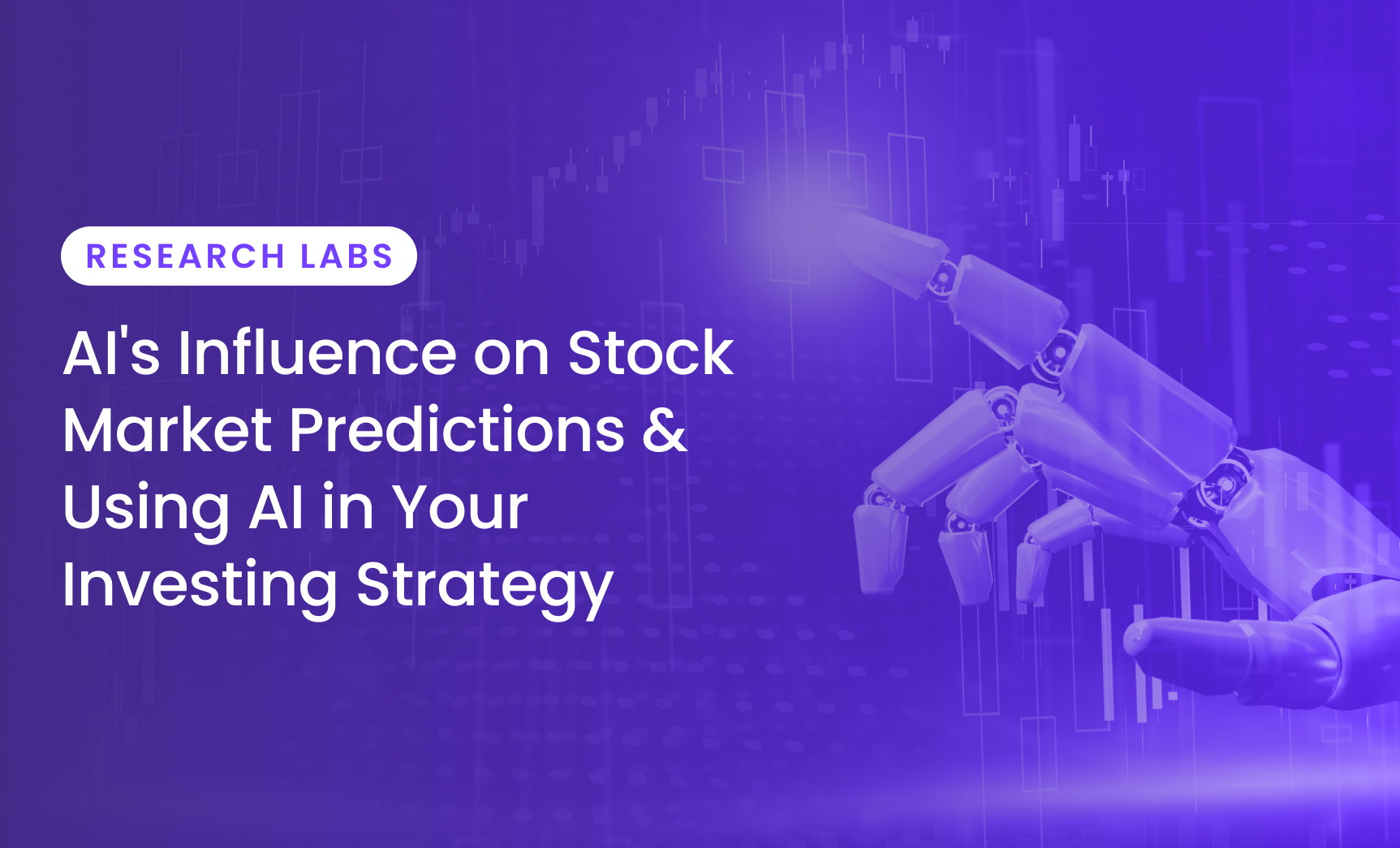Artificial intelligence has found its place in financial markets, bringing a new dimension to analysis and decision-making. Artificial intelligence in finance includes machine learning, natural language processing (NLP), and big data analytics. These techniques allow systems to process large data sets, extract patterns, and make predictions faster and more accurately than traditional models.
—
The financial markets are in the midst of radical change as AI is becoming a greater contributor when forecasting stock markets. With the help of algorithms and the use of models, it is possible to make increasingly swift and precise forecasts. However, great power entails great responsibility. The investors’ decision-making process is changing due to the introduction of AI, which raises the question: can the investment strategies of the future be ethical and sustainable while providing an outlook other than short term?
The Evolution: From Gut Feeling to Computer Logic
In the past, people who invested in stocks used manual research, often supplemented by their gut feelings. This research mainly entailed looking at a company’s financial details, watching recent activity in the market, investigating the performance of company leadership, and analyzing the competition. Some people also looked at past prices and how many people were buying or selling to guess what might happen next.
Even though we think of AI as something new, it’s actually been around for more than 50 years. The world of finance started really getting into AI when improvements in Machine Learning, Deep Learning, and Natural Language Processing made new things possible. This started a new time when making investment decisions was all about using data very carefully.
AI’s Influence on Stock Market Predictions
AI in Financial Markets
Investment firms and hedge funds are increasingly relying on artificial intelligence to power predictive models that predict market trends. By analysing historical data, market sentiment, and news events, artificial intelligence algorithms can predict stock price movements with great accuracy. A notable example is the hedge fund Renaissance Technologies, which has used artificial intelligence models to produce impressive results.
Improving Prediction Accuracy
One of AI’s biggest advantages in stock market predictions is its ability to analyze data in real time. AI tools can process massive amounts of market data—far beyond the capacity of human analysts—and generate forecasts based on historical trends and patterns.
For instance, machine learning models can detect market shifts, identify investment opportunities, and predict price fluctuations with a degree of accuracy that has revolutionized algorithmic trading. Additionally, sentiment analysis tools can gauge public opinion by analyzing news articles, social media, and financial reports, providing insights that influence stock prices.
Challenges and Risks
However, despite its promise, AI is not without its challenges. Overheating is a common problem in machine learning, where algorithms focus on predicting the past but fail to predict future market changes. In addition, AI’s reliance on historical information can limit its ability to predict unpredictable events, such as geopolitical conflicts or natural disasters.
Moral issues are also important. AI-driven market manipulations, such as flash crashes or algorithmic trading that results in positive results, raise important ethical questions about AI manipulation in financial markets.
At the same time, the rise of AI investment fraud shows how scammers are weaponizing similar technologies to mimic legitimate financial advisors, lure investors, and fabricate performance data.
Ethical and Sustainable Investing in the Age of AI
What Is Ethical and Sustainable Investing?
Ethical investing focuses on directing capital towards companies that adhere to specific moral standards. For example, businesses should avoid being involved in harmful practices like tobacco production, child labour, or environmental degradation. On the other hand, sustainable investing emphasizes aligning financial decisions with long-term positive impacts on society, the environment, and corporate governance (ESG).
With a growing number of consumers seeking to align their investments with their values, the demand for ethical and sustainable investing has surged. Now, AI is playing a critical role in helping investors make these conscious choices.
How AI Can Support Ethical and Sustainable Investing
AI technologies can provide valuable insights into a company’s ethical and environmental practices by scanning data sources such as financial statements, news reports, and sustainability audits. Machine learning algorithms can analyze ESG metrics, assess companies’ social and environmental impacts, and provide investors with data to make informed decisions.
For example, AI-based platforms like BlackRock’s Aladdin or MSCI’s ESG Ratings integrate data analysis tools that evaluate the ESG performance of companies. These platforms use machine learning to aggregate data from various sources, generating reliable ESG scores that can guide investment decisions.
Challenges of AI in Ethical Investing
Despite its potential, using AI in ethical and sustainable investing presents challenges. AI models can inherit biases from the data they are trained on. If historical ESG data is incomplete or inaccurate, AI algorithms might produce misleading results. Additionally, ensuring that AI investments do not perpetuate bias in stock recommendations or inadvertently ignore important ethical considerations is an ongoing challenge.
Another dilemma is the balancing act between financial profitability and social responsibility. AI-driven investment strategies focused solely on maximizing returns may overlook key sustainability factors, leading to investments that harm the environment or social well-being.
Steps for Using Artificial Intelligence While Investing
If you would like to incorporate artificial intelligence into your investing or trading, you may consider the following steps.
Step 1: Define Your Financial Goals
The first step for any investor is the same: understand your financial goals and develop an investment plan that suits your needs.
Step 2: Choose Your Investing Approach
Next, you’ll need to decide whether to use a robo-advisor to do most of the work or invest on your own. If you choose a robo-advisor, the advisor’s artificial intelligence technology will do the heavy lifting. You’ll answer questions, review model recommendations, and learn more about portfolio management.
Step 3: Choose an Investment Strategy
If you decide to invest, you will need to define your strategy to understand the types of stocks you want. You can also use models recommended by robo-advisors (often free) to help determine the asset class mix for their portfolio. This uses artificial intelligence to help you develop a self-management plan.
Investment Strategies
|
Strategy |
Description |
How AI Can Help |
Type of Investor |
|
Dividend Investing |
Focusing on stocks that pay regular dividends |
Identifies stable companies with sustainable dividend yields |
Income-focused investors |
|
Factor Investing |
Targeting specific factors like size, value, or quality |
Analyze several or more factors to create optimized portfolios |
Investors seeking targeted exposure to certain market characteristics |
|
Growth Investing |
Focusing on companies with high growth potential |
Predicts future growth rates using various data points |
Investors willing to take on more risk for higher returns |
|
Momentum Investing |
Buying rising stocks and selling falling ones |
Identifies trends and optimal entry/exit points |
Active investors comfortable with frequent trading |
|
Options Strategies |
Using options derivatives for income or hedging |
Designs and executes complex options strategies |
Sophisticated investors seeking income or downside protection |
|
Passive Index Investing |
Invest in mutual and exchange-traded funds that follow specific indexes. |
Optimizes index tracking while minimizing costs |
Passive investors seeking market-level returns |
|
Risk Parity |
Balancing risk contribution across asset classes |
Continuously rebalances portfolio to maintain equal risk distribution |
Risk-averse investors seeking steady returns |
|
Socially Responsible Investing |
Investing based on ethical or social criteria |
Screens companies based on environmental, social, and governmental factors |
Investors prioritizing social and environmental impact |
|
Tactical Asset Allocation |
Adjusting portfolio mix based on market conditions |
Predicts market trends to optimize asset allocation |
Investors comfortable with a more active management approach |
Step 4: Identify Your Investing Tools
Stock screeners are helpful AI tools when choosing individual stocks for your portfolio. These often have preset filters to help you get started.
Step 5: Start Managing Your Portfolio
Once the portfolio is up and running, you can employ different automated tools to help manage your positions to enter and exit your positions. You might also want to refine your stock screen searches and learn to use the efficient frontier to craft a portfolio for favourable returns and the lowest risk possible.
Conclusion
AI is undeniably changing the way we approach stock market predictions, offering opportunities for greater accuracy, speed, and insight. However, as we embrace these technological advancements, we must also consider their ethical implications and potential for social good. The growing intersection of AI and sustainable investing presents an exciting opportunity to align financial markets with the values of responsible investors.
Because investment strategies depend so heavily on your personal situation and goals, it’s important for you to do your research before you commit your capital to any investment using AI or using your own manual methods.
As AI becomes an integral part of investment strategies, it’s crucial to consider both its predictive capabilities and its role in fostering ethical and sustainable investments. After all, the future of investing should not only focus on financial gains but also on creating a better, more sustainable world.





